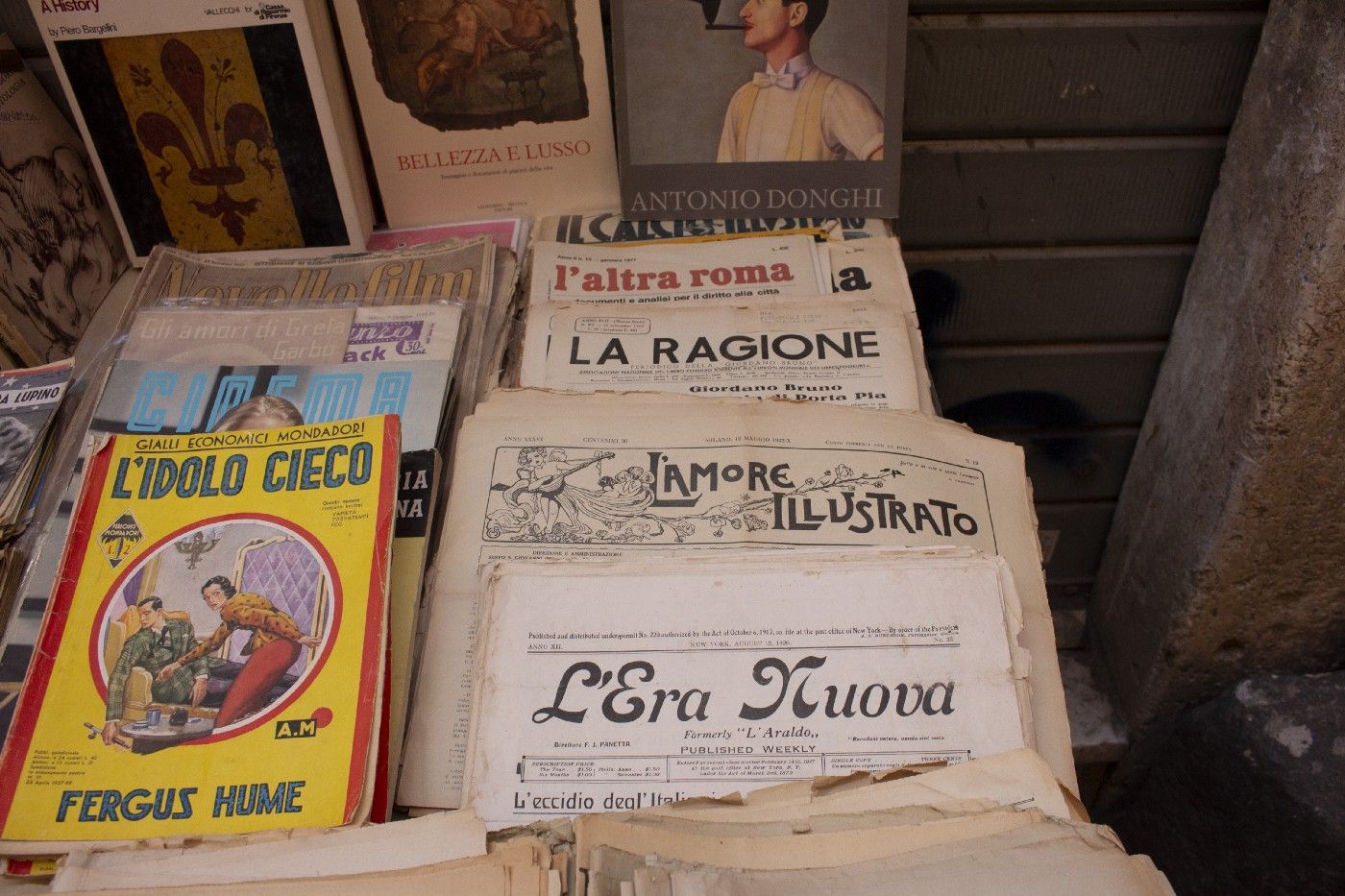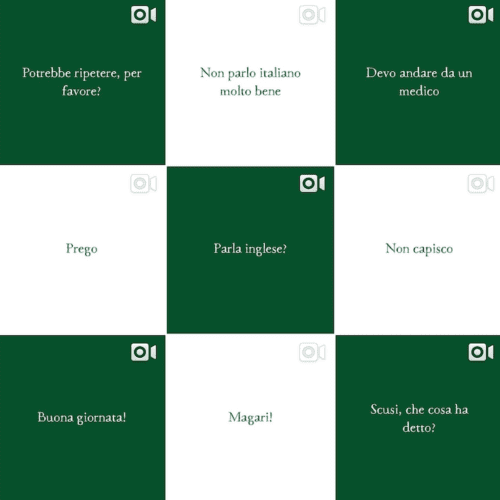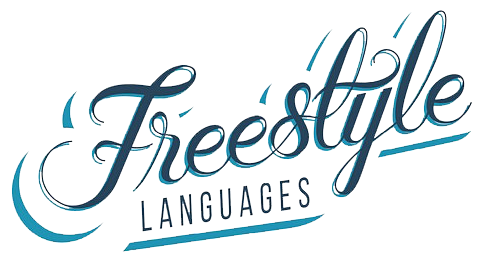Team Freestyle
How To Sound More Like A Native Italian Speaker 101
What’s your Italian level? Take our free placement quiz!
Learn How To Talk The Talk With These 4 Quick Tips
Parli italiano? Fun Facts:
- There are 85 million Italian speakers around the globe
- Italian only has 21 letters in the alphabet (the letters j, k, w, x, and y don’t exist in Italian!)
- Italian is the fourth most studied language in the world
- The longest word in Italian is precipitevolissimevolmente, which means very hastily
No matter where you are in your language-learning journey, the ability to sound more like a native speaker comes in handy. Developing an ear for Italian accents and picking up on typical speech patterns improves the quality of your communication skills, increases your cultural currency, and even aids your ability to learn the language itself. Allora, che cosa state aspettando? Put these tips and tricks into practice in order to achieve your fluency goals!

Varieties Of Italian:
Lo sapevate? Did you know? The famous Italian writer Dante Alighieri first formalized the language in La Divina Commedia in the 13th century, and was named the ‘father of the Italian language’ as a result. He completed the work using the Tuscan dialect, later solidifying its status as the national language of Italy.
However, the Italian peninsula did not unify until the 19th century, and each individual region had its own dialect prior to unification. The meaning of words and expressions changed from one village to another. Today, there are over 30 dialects of Italian. These dialects include Romanesco, Abruzzese, Salentino, and Barese, to name a few.
The variation in the language within a single country may intimidate some language learners, but non ti preoccupare! With our tips and hacks below (and fun tongue twisters for practice!), you’ll be on your way to sounding more like a native Italian speaker!
However, the Italian peninsula did not unify until the 19th century, and each individual region had its own dialect prior to unification. The meaning of words and expressions changed from one village to another. Today, there are over 30 dialects of Italian. These dialects include Romanesco, Abruzzese, Salentino, and Barese, to name a few.
The variation in the language within a single country may intimidate some language learners, but non ti preoccupare! With our tips and hacks below (and fun tongue twisters for practice!), you’ll be on your way to sounding more like a native Italian speaker!

While Italy is home to regional an expansive array of dialects, the Tuscan dialect remains the most popular, accounting for around 20 million of Italian speakers.
1. Pronunciation: The Crossfit Of Language
Learning a new language requires passion, patience, and perseverance. One of the most common challenges for adult language learners? Tackling the ‘aural’ roadblock!
As children, exposed to the sounds of the English language, our brains take these ‘phonemes’ and commit them to memory as part of our own language development. As we age, however, our brain has a difficult time recognizing new ones. But there’s good news too!
Research shows that training your ears to recognize the sounds of your ‘target language’ as a primer for studying greatly improves your ability to memorize new words and phrases in that language.
While Italian speakers may sound different region to region, linguists find that exposure to a multitude of dialects actually increases our ability to codify the language into our brain. Grazie a Dio!
Truly, FLC considers pronunciation, the crossfit of language: strengthening from the core, for greater success in your language learning goals!
Take advantage of our Pronunciation Workshops which actually incorporate practice and audio (beyond simply listening) to improve pronunciation and uncover the nuances of spoken language! With repetition and practice, you’ll be impressing your amici e famiglia in no time!
As children, exposed to the sounds of the English language, our brains take these ‘phonemes’ and commit them to memory as part of our own language development. As we age, however, our brain has a difficult time recognizing new ones. But there’s good news too!
Research shows that training your ears to recognize the sounds of your ‘target language’ as a primer for studying greatly improves your ability to memorize new words and phrases in that language.
While Italian speakers may sound different region to region, linguists find that exposure to a multitude of dialects actually increases our ability to codify the language into our brain. Grazie a Dio!
Truly, FLC considers pronunciation, the crossfit of language: strengthening from the core, for greater success in your language learning goals!
Take advantage of our Pronunciation Workshops which actually incorporate practice and audio (beyond simply listening) to improve pronunciation and uncover the nuances of spoken language! With repetition and practice, you’ll be impressing your amici e famiglia in no time!
Pronunciation hack: use tongue twisters to enhance your pronunciation of the vowels and consonants in any language! Follow along with Patrizia, Italian teacher extraordinaire, as she walks you through this fun twister!
2. Come Si Dice ‘Filler Words’?:
Need a moment to figure out your next sentence? You don’t have to eliminate “um”, “so…”, or “like” from your speech – just translate them! As it turns out, Italians use fillers in everyday conversation in the same way we do! Use some of the most common fillers, listed below, to sound more like a native speaker – who new they could be so ‘globally relevant’?
- Allora – This filler is extremely useful for those who need a pause before their next sentence. Allora can be used in a variety of situations, and means “then”, “so…”, “well”, or “therefore”.
- Dai – Use this filler to say “come on”. Italians use dai mostly as a term of encouragement.
- Occhio – Literally “eye”, this filler means “pay attention”.
- Uffa – Use this filler to express boredom or frustration.
- Cioè – Italians use this word to say “that is to say” or “namely”. You can also use cioè to correct yourself mid sentence.

3. Embrace Authentic Materials:
Want to blend in with Italian speakers? Learn the everyday language of Italian, including slang (gergo)! Languages are full of shortened words, phrases, slang and idiomatic expressions. Everyday language not only builds authenticity in your speaking, but can even offer a glimpse into the culture behind the language. È vero!
Listening to and using language as it’s truly spoken, in relevant cultural contexts and across a variety of genres, builds proficiency at a faster rate than traditional classes alone can. The FLC model uses film italiani, film trailers, even ‘soaps’ (!) and music as ‘authentic materials’ (i.e. those created by those of the target language FOR those of the target language), at the very core of our curriculum!
This multi-media approach not only highlights the most commonly used phrases in context, it improves cultural competency as well. Ovviamente, to truly gain a greater understanding of Italians and the Italian language, we encourage incorporating a ‘study’ mindset in your film watching: take notes – on how characters greet one another, how individuals interact with store clerks, and the most commonly used gestures and fillers, look things up, rewind, repeat, and use subtitles too (initially in English, in Italian in later stages…).
Some of our favorites? Our newest course, the Italian ‘recap’ (beginner’s review) practices and learns Italian through a contemporary television series, 1992 Berlusconi Rising! Around Austin? Come in for a free trial of it this summer – and experience our effective 21st century methodology all while having fun!
Listening to and using language as it’s truly spoken, in relevant cultural contexts and across a variety of genres, builds proficiency at a faster rate than traditional classes alone can. The FLC model uses film italiani, film trailers, even ‘soaps’ (!) and music as ‘authentic materials’ (i.e. those created by those of the target language FOR those of the target language), at the very core of our curriculum!
This multi-media approach not only highlights the most commonly used phrases in context, it improves cultural competency as well. Ovviamente, to truly gain a greater understanding of Italians and the Italian language, we encourage incorporating a ‘study’ mindset in your film watching: take notes – on how characters greet one another, how individuals interact with store clerks, and the most commonly used gestures and fillers, look things up, rewind, repeat, and use subtitles too (initially in English, in Italian in later stages…).
Some of our favorites? Our newest course, the Italian ‘recap’ (beginner’s review) practices and learns Italian through a contemporary television series, 1992 Berlusconi Rising! Around Austin? Come in for a free trial of it this summer – and experience our effective 21st century methodology all while having fun!

In the meantime, ecco qui! A few fun slang expressions to add to your repertoire:
- Che figo (how awesome) Use this exclamation to express happiness or surprise!
- Fregatura (rip off) This could be helpful when shopping in some of Italy’s most expensive cities
- Non vedo l’ora – (to be excited) Literally “I don’t see the hour”, use this phrase when you are really looking forward to something!
- Serata fichissima – (a great night) Use this phrase after making memories all night with close friends
Keep up your everyday language with our daily Instagram posts (includes audio)!

4. Find Your Community:
Italians are all about socializing, with public spaces playing a big role. You’ll find piazzas scattered throughout the country so that friends and families can mingle while taking a passeggiata in the afternoon or early evening. Embrace this joy in sharing the pleasures of life with others by putting yourself out there!
Find opportunities to speak face-to-face with other Italian speakers to bond with new people, catch up on news, and create a sense of community belonging. Take advantage of our own events and join us at our next happy hour, wine tasting, or Saturday café!
Go full Italian and show up to show off your bella figura. On the surface, one’s bella figura relates to appearance and first impressions. Bella figura, however, goes beyond image – it’s a way of life! It means knowing how to interact with others in a social setting with poise and grace. In other words, non fare brutta figura (don’t give off a bad impression)!
Find opportunities to speak face-to-face with other Italian speakers to bond with new people, catch up on news, and create a sense of community belonging. Take advantage of our own events and join us at our next happy hour, wine tasting, or Saturday café!
Go full Italian and show up to show off your bella figura. On the surface, one’s bella figura relates to appearance and first impressions. Bella figura, however, goes beyond image – it’s a way of life! It means knowing how to interact with others in a social setting with poise and grace. In other words, non fare brutta figura (don’t give off a bad impression)!



There you have it! As you try out these tips and tricks, remember not to lose sight of the beauty of the language. Learn to let the sounds and words wash over you and to have fun with it! Join our newsletter for more information and fun language practice.
Thank you!
Freestyle Languages
Language learning your way.
